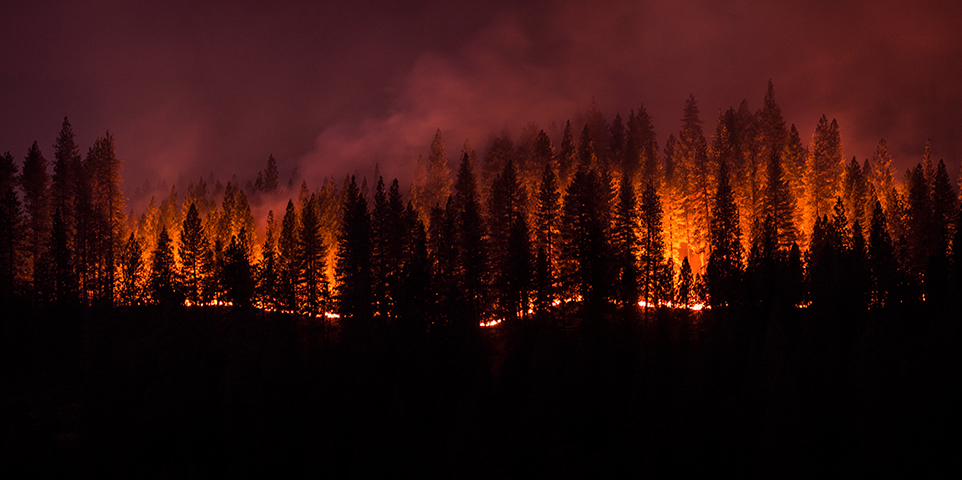Facts about wildfire risk
The deadly destruction of a wildfire is not to be underestimated. Hard to contain, wildfires consume everything in their wake and wreak havoc on lives, landscapes and homes. Wildfires:
- Occur in 38 states – California is the state most associated with wildfires and, in fact, eight of the 10 most costly wildfires in the U.S. have occurred there. That said, Texas has been known to have twice the wildfires as California in a given year and 38 of U.S. states have areas at risk.
- Like dry conditions – Drought conditions, dry undergrowth and the presence of combustible and flammable materials contribute to wildfire hazard.
- Are more dangerous in combination with development – The risk of damage increases as housing and business development expands into the wildfire-prone wildland-urban interface (WUI)—such as mountain, foothill or grassland areas.
- Spread mostly on the wind – Direct flame contact and radiant heat from a wildfire can ignite combustible materials. However, research has shown that homes burned during wildfires most frequently catch fire from live embers (or "firebrands") that are blown by the wind.
- Thrive on house "togetherness" – Because of the dangers of the embers, close proximity of homes and presence of combustible features both increase the chances of a home going up in flames. Fire spreads rapidly when homes are less than 15 feet apart, making homes that are clustered near others more likely to burn. Features like fences and attached decks made from combustible materials often hasten the spread of fire.
Wildfire preventative building features
Wildfires need fuel to spread—like wood, plastic, wood-plastic products and foliage. Don't help your house feed the flames—fit or retrofit your home with features that deter fire. The Insurance Institute for Business & Home Safety (IBHS) and others have this advice:
- Maintain five feet of non-combustible "defensible space" around your home – Keep a five-foot diameter space of gravel, brick, or concrete in the area adjacent to your home.
- Maintain an expanded "defensible space" between five and 30 feet from your home – Keeping this area as unattractive to wildfires as possible will reduce the risk. Move trailers/RVs and storage sheds from area, or build defensible space (see above) around these items. Remove shrubs under trees, prune branches that overhang your roof, thin trees, and remove dead vegetation.
- Use non-combustible siding – and maintain a six-inch ground-to-siding clearance
- Regularly clean from your roof and gutters – to keep debris from being ignited by wind-blown embers. Use noncombustible gutter covers.
- Get a Class A fire-rated roof – Class A roofing products offer the best protection for homes.
- Use non-combustible fences and gates - Burning fencing can generate embers and cause direct flame contact to your home.
- Cover vents and create soffited eaves – Use 1/8-inch mesh to cover vents, and box-in (create soffits) on open eaves to keep embers out.
- Use multi-pane, tempered glass windows – Close windows when a wildfire threatens.
- Fireproof the deck - At a minimum, use deck boards that comply with California requirements for new construction in wildfire-prone areas. Remove combustibles from under deck, and maintain effective defensible space around the deck.
- Keep combustibles far away from the house – Combustible structures in the yard such as wood, plastic or plastic-wood playground equipment should be at least 30 feet away from the house. Experts indicate that evergreen trees, palms and eucalyptus trees have more combustible qualities than others—keep this type of vegetation 100 feet away from the house.
Additional resources
Firewise USA®
Insurance Institute for Business & Home Safety – wildfire resources
Next steps link: Know that your family is ready if the worst happens—prepare an evacuation plan.
